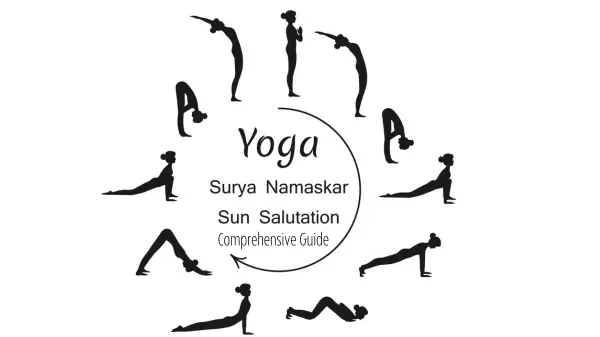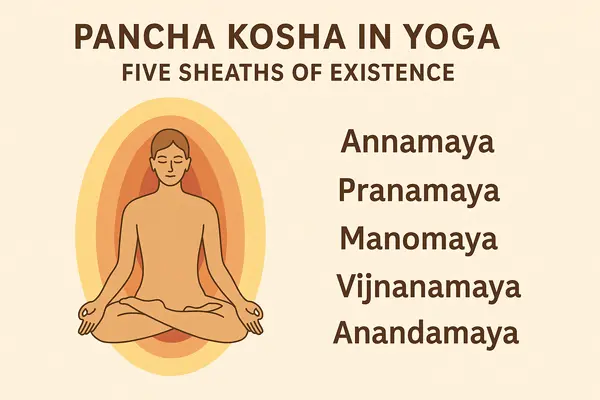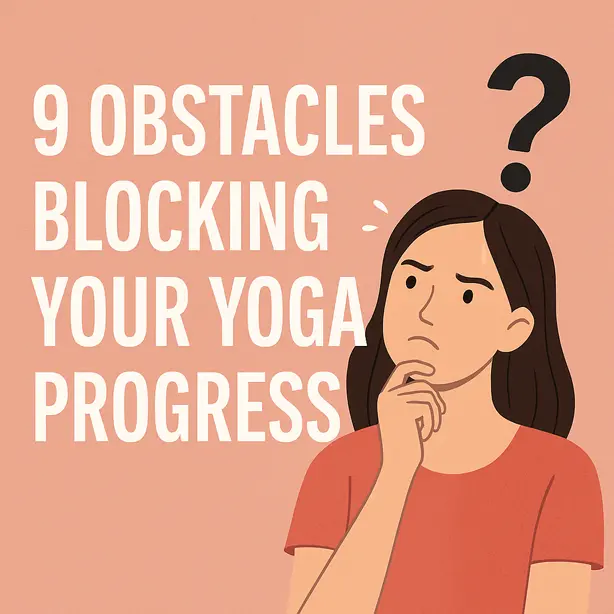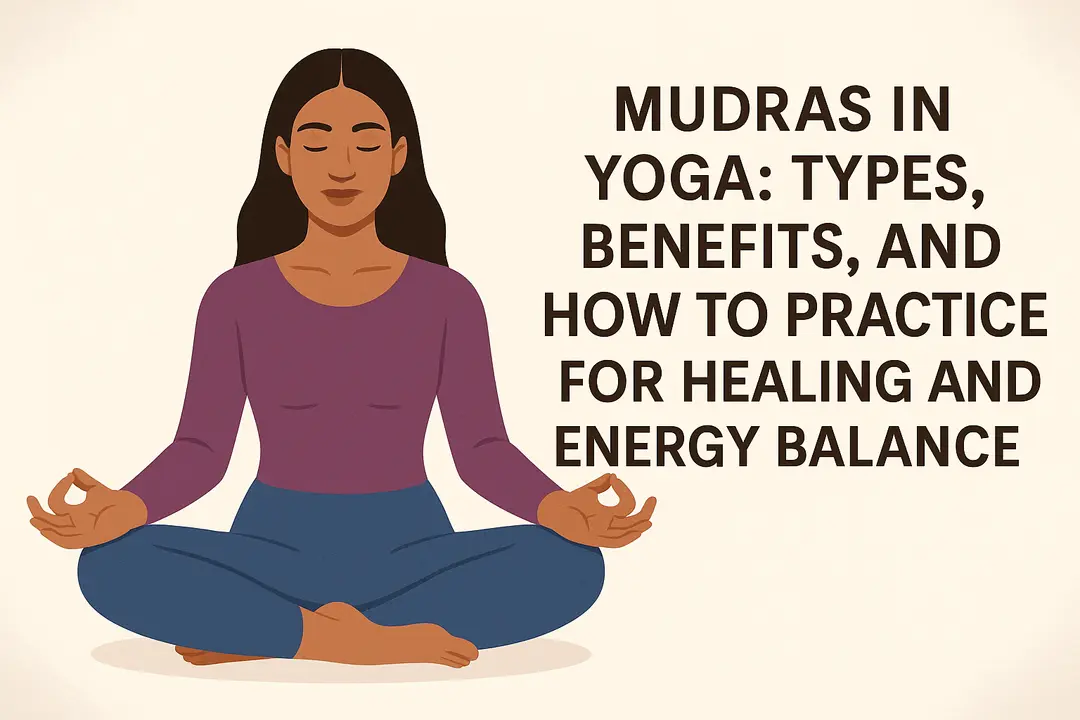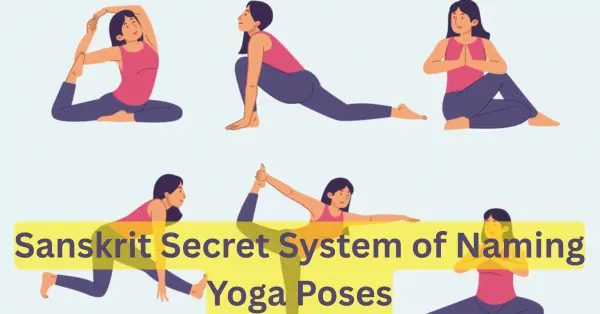Surya Namaskar or Sun Salutation is a set of 12 postures. One posture gracefully flows into the next one. If you could just practice one thing from yoga, this would be the one. An all-rounder indeed. It rightfully takes care of the physicality as well as spirituality.
In this article, we will learn about Surya Namaskar in its entirety.
What is Surya Namaskar?
Also known as Sun Salutation, it’s a set of 12 poses embedded with breathing patterns and mantras. One pose complements the next pose with a specific form and breathing pattern.
It’s a powerful system of Yoga to keep your body fit in every aspect from top to toe.
Origin of Surya Namaskar
One can find traces of Surya Namaskar from about 2,500 years ago. Rig Veda mentions Trucha Namaskar Kalpa, which has a similar way of practicing as Surya Namaskar. Aditya Parsna from Yajur Veda also has a similarity to Sun Salutation.
Types of Surya Namaskar
The Internet is full of wrong information about the “types of Sun salutations”. To break it to you, there is only one type of Surya Namaskar i.e. traditional form shown in this post.
Surya Namaskar A, B, and C are not “Surya Namaskar”. You can call those ABCs with a different name. But it’s everywhere now, whether it’s YouTube or all the popular blogs.
You will not get spiritual benefits with this wrong information i.e. “Sun Salutation A, B, and C”. You can do those ABCs as a mere exercise, and that’s about it.
Surya Namaskar Steps with Breathing and Mantra
Focus on breathing to reap 100% benefits of sun salutation. You must recite the mantra only mentally with proper breathing mentioned below.
If you can’t recite the mantra mentally, just focus on the breathing. Here are the 12 steps of sun salutation.
1. Parnam Asana (Prayer pose)
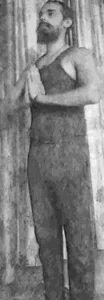
Technique: You must stand upright with folded palms in front of your chest as the traditional way of greeting ‘Namaste’.
Breathing: Exhale all. Breathing must change exactly when you start going to the next pose.
Mantra: ॐ मित्राय नमः (Om Mitraya Namaha)
2. Hastauttan Asana (Raised arms pose)
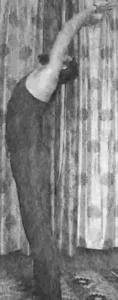
Technique: From the position of folded palms, throw your arms above and bend your backbone behind as far as you can.
All while inhaling at the same time. Start inhaling at the start of switching to the pose.
Breathing: Start inhaling while starting to switch to this pose, and inhale all at the end of the pose.
Mantra: ॐ रवये नमः (Om Ravye Namah)
3. Hastapada Asana (Standing forward bend)

Technique: From the position of ‘Raised arms pose’, bend down in front. Without bending your knees, place your palms on the ground. Put your face next to your knees.
Breathing: Start exhaling while starting to switch to this pose, and exhale all at the end of the pose.
Mantra: ॐ सूर्याय नमः (Om Suryaye Namah)
4. Ashwa Sanchalana Asana (Equestrian pose)

Technique: From the position of ‘standing forward bend’, throw the left leg back. Put the right foot flat between the hands.
Flex or stretch the right leg in a way that the thigh has close contact with the torso. You must look up and strech your neck behind as far as you can.
Breathing: Start inhaling while starting to switch to this pose, and inhale all at the end of the pose.
Mantra: ॐ भानवे नमः (Om Bhanve Namah)
5. Dand Asana (Stick pose)
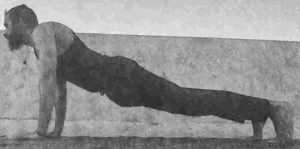
Technique: From the position of the last pose, put your right leg back too. Make the arms and back straight.
Breathing: Start exhaling while starting to switch to this pose, and exhale all at the end of the pose.
Mantra: ॐ खगाय नमः (Om Khagaye Namah)
6. Astanga Namaskar Asana (Salute with eight points or parts)

Technique: As you start to breathe out, put your chin, knees, and chest to the ground making a dip. You must keep the pelvis up.
No other part of the body should touch the ground except 2 palms, chin, chest, 2 knees, and 2 toes.
Breathing: Keep the breath exhaled out until the pose ends.
Mantra: ॐ पूष्णे नमः (Om Pushney Namah)
7. Bhujang Asana (Cobra Pose)

Technique: From the position of the previous pose, straighten your arms. Put your head up and backward while bending the spine as much as possible.
Breathing: Start inhaling while starting to switch to this pose, and inhale all at the end of the pose.
Mantra: ॐ हिरण्यगर्भाय नमः (Om Hiranayagarbhaye Namah)
8. Adho Mukha Svan Asana (Downward facing dog pose)

Technique: From the position of the cobra pose, try to make a Latin alphabet “Ʌ” with your body while putting your butts up. You must look at your navel. You can keep your heels on the floor for an extensive stretch.
Breathing: Start exhaling while starting to switch to this pose, and exhale all at the end of the pose.
Mantra: ॐ मरीचये नमः (Om Mrichey Namah)
9. Dakishna Ashwa Sanchalana Asana (Equestrian pose left)
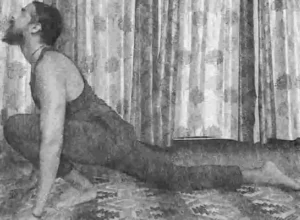
Technique: Bring the left leg between the hands. Keep your foot flat on the ground. Put your torso close to the left thigh while taking your head up and behind as far as possible.
This pose is similar to the pose no. 4. The only difference is you have the left leg between the hands.
Breathing: Start inhaling while starting to switch to this pose, and inhale all at the end of the pose.
Mantra: ॐ आदित्याय नमः (Om Adityaye Namah)
10. Hastapada Asana (Standing forward bend)

Technique: Bring the right leg next to the left leg. Keep your knees straight. Put your face in the knees.
This pose is the same as pose number 3.
Breathing: Start exhaling while starting to switch to this pose, and exhale all at the end of the pose.
Mantra: ॐ सवित्रे नमः (Om Savitrey Namah)
11. Hastauttan Asana (Raised arms pose)

Technique: While inhaling, straighten the body while throwing your hands above your head, bending back as far as you can.
Breathing: Start inhaling while starting to switch to this pose, and inhale all at the end of the pose.
Mantra: ॐ अर्काय नमः (Om Arkaye Namah)
12. Parnam Asana (Prayer pose)

Technique: Bring your hands from the back and fold your palms next to the chest. Come back to the ‘Namaste’ position as in pose number 1.
Breathing: Start exhaling while starting to switch to this pose, and exhale all at the end of the pose.
Mantra: ॐ भास्कराय नमः (Om Bhaskraye Namah)
Right Pace of Sun Salutation
A beginner must start with a slow pace for a solid foundation of movements with correct form, and breathing patterns. You can try fast or medium pace once you memorize all the moments with the correct form and breathing patterns.
Slow Pace
1. Hold for more than 10 seconds in every pose.
2. Good for beginners
3. Ideal to increase the flexibility
Medium pace
1. Hold 3-5 seconds in every pose.
2. Good for used-to practitioners
3. Ideal to get toned muscles
Fast Pace
1. Don’t hold in any pose. Do it as fast as you can.
2. Good to try after having complete mastery.
3. Ideal for weight loss. Be ready to sweat a lot at this pace.
Long Term Benefits of Surya Namaskar
The benefits of sun salutation don’t show up in a day. Generally, a person has to practice for 90 days to see the transforming effects on the body.
The long-term benefits of Surya Namaskar are below:
1. Balances all the aspects of the human body
Whether it’s physical, mental, or emotional, Surya Namaskar balances all the aspects with its rhythmic breathing as well as exercise part.
2. A sound cardiovascular system
Sun salutation promotes blood circulation throughout the body. Also, it increases your heart rate with perspiration. Hence you get an improved cardio-vascular system by performing Suryanamaskar daily.
3. Good for the digestive system
After you eat food, all the blood rushes to the stomach. Sun Salutation increases the blood flow to the intestine resulting in better digestion of the food.
5. The internal organs stay in good health
You get a gentle massage to your internal organs while performing. It keeps the abdomen, spinal nerves, respiratory system, and lymphatic system in optimum condition.
6. Increases overall flexibility of the body
It gives complete exercise to the whole body (Chest, Neck, Shoulder, Back, Abs, Triceps, Legs, and Arms). It tones your overall body. Prolonged periods of practice increase your flexibility by a large number.
The elasticity of the spine keeps you young forever.
An old yogic saying
7. A great source for losing weight
It tones every part of the body, especially the belly region. However, the rigorous training of Suryanamaskar for a prolonged period with a yogic diet sheds those extra kilos faster.
8. Enhances hair growth
The blood flow increases to the scalps and head making the hair grow at a better rate. You will have strong and healthy hair.
9. Menstrual cycles become regular
Modern girls are affected by the irregularity of their periods for plenty of reasons. Accumulating Sun salutation in their regime can make their problem go away entirely after a prolonged period of practice.
10. Helps in detoxing the body
Your blood gets more oxygen. Every part of the body gets oxygenated quite well. This repels toxins out of your blood, organs, and vital parts of the body.
11. Say goodbye to Insomnia
Sun Salutation calms your nerves. It balances the secretion of your glands. When the whole system is balanced you will naturally sleep at night.
12. Induces the peace and tranquility.
When you do it with proper breathing and technique almost like a ritual, it brings spiritual peace and tranquility to your system.
13. Balances Vata, Pitta, and Kapha Dosha
It also balances Vata, Pitta, and Kapha dosha or bodily humors. A balance of these three means no disease at all in the body.
14. Helps with Anxiety and Depression.
Your brain as well as other parts gets more oxygen. This leads to a better functioning of the body on the physical, mental, emotional, and spiritual levels. As a result, you find it extremely beneficial in anxiety, stress, and depression.
Surya Namaskar has the power to completely cure depression after a considerable time.
15. Improves Sexual Health
Surya Namaskar exercises your pelvic region quite well. You get an abundance of blood down there. After a long period of practice, it can even cure erectile dysfunction. It’s equally helpful with FSAD (Female Sexual Arousal Disorder)
It generally takes 9 months of daily practice with a proper yogic diet and yogic conduct to cure erectile dysfunction. The time limit may differ from person to person.
It’s helpful for both men’s and women’s sexual health.
16. Increases Awareness
Surya Namaskar opens up your senses physically as well as spiritually. You simply become more aware of yourself, your surroundings, and in general.
17. Helps in natural childbirth
If you are aiming for natural childbirth, you must do Surya Namaskar until the day you cannot bend your body. You will have a less painful natural delivery.
Please don’t force your body to do Surya Namaskar when you are close to Childbirth. Avoid accidents, don’t be a fool. Use common sense.
18. Increases testosterone
All the exercises and movements that focus on the pelvic region increase testosterone. Surya Namaskar put emphasis on the pelvic region multiple times during the performance.
The effects get doubled if you do sun salutation outside in the sun. Morning sun until 9 am and evening sun after 4 pm. Sunlight itself is a natural testosterone booster.
Sun Salutation Common Mistakes
1. Not practicing it with the proper breathing technique.
2. Not rubbing and massaging your own sweat after the practice of asanas or sun salutation.
It’s an age-old yoga technique to gain the energy generated in the form of sweat. You must at least rub the exposed part of the body with your sweat.
3. Becoming too critical about the form and shape of the poses when you are a mere beginner. Everyone starts somewhere so relax, with time you will have flexibility and perfection.
4. Practicing in a closed room with no fresh air or sunlight.
5. Not warming down or cooling down after the practice of sun salutation or other asanas.
You must cool down with Savasana (corpse pose), which is just lying down on your back (hand on the side) with eyes closed in as relaxed a way as you can while breathing normally.
6. Performing Surya Namaskar after eating. When you eat, the blood rushes to your stomach for digestion.
Surya Namaskar makes rapid blood flow all over the body. Practicing after eating leads to serious indigestion. Indigestion is an invitation to various diseases.
Always practice Surya Namaskar on an empty stomach or at least 4 hours after the last meal.
Who should not do Surya Namaskar
A person who is suffering from
1. Hernia
2. Severe back pain or injury.
3. High blood pressure
4. Severe arthritis
5. Any form of injury like an injured hand, broken bone, etc.
Always remember a golden rule, don’t bend forward if there’s back pain. Do not bend backward if you have a hernia.
Also, Pregnant ladies must refrain from doing Surya Namaskar
What to wear during the practice of Surya Namaskar
Not just Sun Salutation but while doing any form of yoga, you must wear loose and comfortable clothes preferably cotton clothes. You must avoid skin-tight clothes eg. yoga pants. Yoga is not about flashing your butts.
Skin-tight clothes create a hindrance in the blood flow as well as energy flow.
Things you will need to do Sun Salutation
- Fresh air. Preferably, do it outside in the sun. Sunlight before 9 am and after 4 pm is best for you.
- A cotton yoga mat.
- Wear comfortable clothes, cotton clothes are of high value while doing yoga.
- A smile on your face 🙂
How many sun salutations should one do?
It’s not a question of numbers. It depends on you. If you are comfortable doing 100 Surya Namaskar, then you can do 100.
Although you should do at least 12 Surya Namaskar to get good results. If you are far too busy, do a bare minimum of 3 salutations.
If you want to know in minutes, you should at least practice for 5 minutes daily as a beginner. 10 minutes for the intermediate practitioner and 20 minutes for the advanced practitioner.
Keep in mind to keep the form and breathing pattern from the first to your last salutation.
Surya Namaskar Mantras
All the 12 mantras are mentioned above for each pose. However, there’s a mantra you can recite before starting the Sun salutation.
ॐ सूर्यं सुन्दर लोकनाथं अमृतं वेदान्तसारं शिवम्
ज्ञानं ब्रह्ममयं सुरेशममलं लोकैकचितं स्वयम् ॥
इन्द्रादित्य नाराधिपं सुरगुरुं त्रैलोक्य चूडामणिम्
ब्रह्मा विष्णु शिव स्वरूप हृदयं वन्दे सदा भास्करम् ॥
Om Suryam Sundar Lokanatham Amritam Vedantasaram Sivam
Gyanam Bramhamayam sureshamamlam Lokaikachitam Svayam
Indraditya Naradhipam Suragurum Trailokya Chudamanim
Bramhavishnusiva Savrupahridayam Vande Sada Bhaskaram
Meaning of Mantra
I always worship you the sun, the beautiful lord of the world, the essence of Vedanta, knowledge absolute, form of lord Brahma, pure forever, lord of gods, the consciousness of the world itself. The lord of God Indra, men, and the gods, preceptor of the gods, precious jewel of three worlds, the heart of lord Brahma, Vishnu, and Shiva, the giver of light.
Conclusion
Sun Salutation is an outstanding practice in yoga that simultaneously targets physicality, mental health, and spirituality.
Incorporating it into your workout will increase your flexibility, sharpen your awareness, and boost your mood.
It will also make digestion robust, remove constipation, and improve sexual health. All in all, it can take care of your health entirely.
Remember to practice it with the correct technique and breathing patterns.
FAQ Surya Namaskar Sun Salutation
Apart from practicing Surya Namaskar, you also have to take care of your diet and sleep. You can’t eat junk food, drink alcohol, stay up all night, and expect benefits from it.
If you have a healthy lifestyle then please check if you practice the sun salutation with the correct form and breathing patterns. Form and breathing techniques are important to reap all the benefits.
It’s because we have 108 chakras in our body. We do one Surya Namaskar for every chakra. Yogis practice 108 Sun salutations as a meditative process to feel the connection between the body and the universe.
You can but you don’t absolutely have to.
You can do 10-12 Surya Namaskar with complete focus, correct breathing, and perfect form, and you will get the same benefits. If you wanna do more, that’s also fine. It kind of depends on your capacity.
Sun takes almost 12 years to complete its one full cycle. Hence, the number 12 is associated with Surya namaskar.
Yes and no. If you take care of your diet and sleep then yes. Otherwise, no.
No. Remember, you must not bend backward in any asana or practice of yoga when you are on periods.
It can vary from person to person. It usually takes 80-90 days with a yogic lifestyle to see the proper benefits on the body.
If you are asking about the time duration, then 10 minutes of practice daily should suffice.
Sun salutation is a warm up in itself. What you can do is start with a slow pace and then gradually increase the pace.
Reference
- A comparative study of slow and fast Surya namaskar on physiological function (NCBI)
- Surya Namaskar: Its Techniques and Health Benefits (Researchgate)

